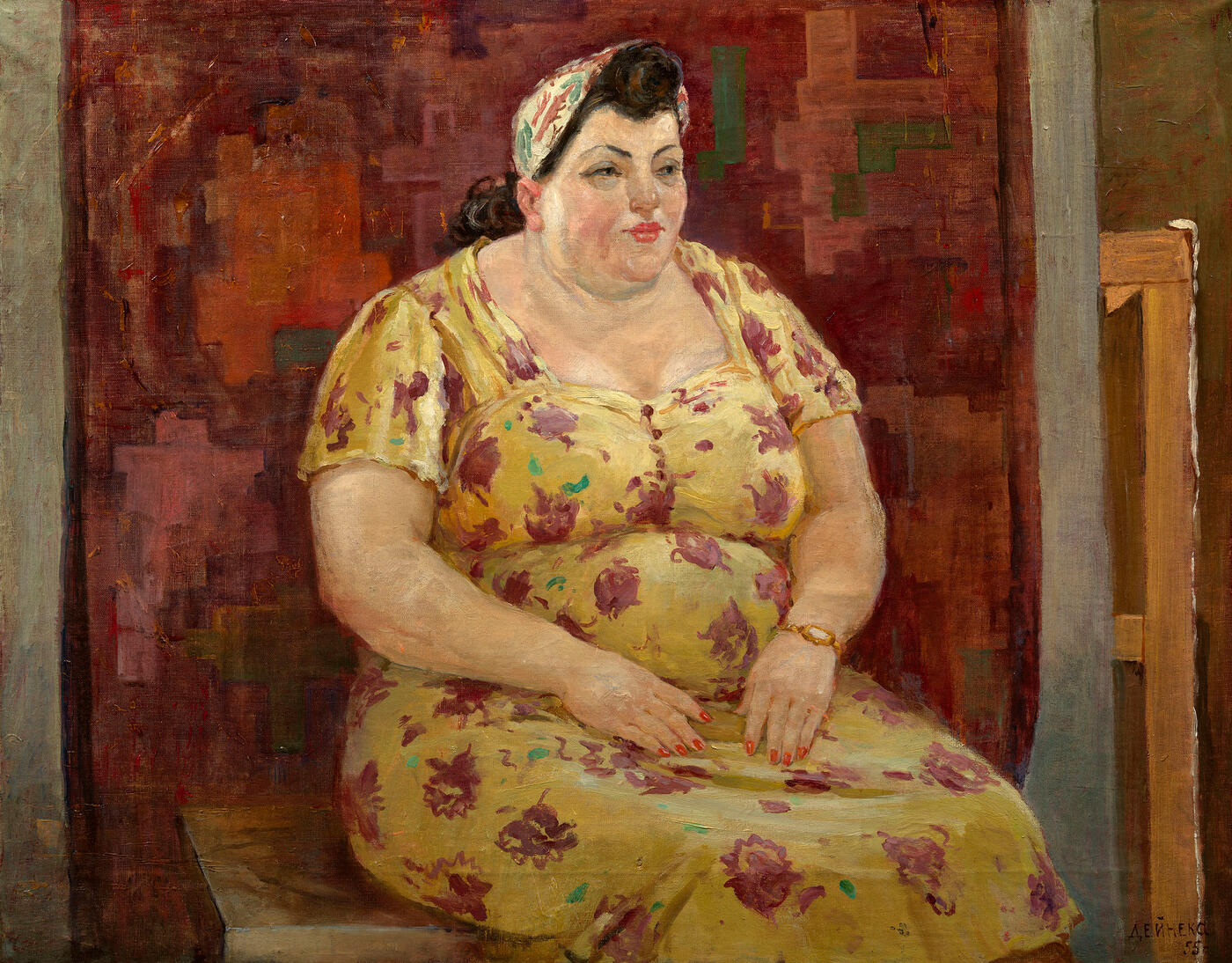6 June 2018 Russian Art Auctions
6 June 2018

7. DEINEKA, ALEXANDER (1899-1969)
Woman in a Yellow Dress, signed and dated 1955.
Oil on canvas, 65 by 83 cm.
300,000-500,000 GBP
Provenance: Private collection, Europe.
Authenticity certificate from the expert T. Zeliukina.
Related literature: For the work Mayakovsky’s Verses, see V. Sysoev (ed.), Alexander Deineka, Leningrad, Aurora Art Publishers, 1982, p. 13, mentioned in the text.
Deineka. Zhivopis, Moscow, Interros, 2010, p. 165, illustrated and listed; p. 334, No. 261, illustrated.
The portrait Woman in a Yellow Dress, which MacDougall’s is now presenting for auction, was painted by Alexander Deineka in 1955. The artist was, at that time, focusing particularly on female images, and he created several portraits that were seen by his contemporaries as expressing the spirit of the age. In these works the artist is looking in individual features for those that are typical; he seeks not only to convey the appearance of a particular model, but also to create a generalised portrait of the woman of his times. The Portrait of the Architect Tamara Mileshina (1955) and Mother and Sister (1954) are apposite examples, as well as a whole series of portrait or genre-and-portrait compositions in which the principal female figures are unnamed and act as typical representatives of Soviet womanhood at work (The Milkmaid, 1959; Peaceful Construction, 1959–1960; At the Seaside, 1957), on holiday (In the Crimea, 1956; Bathers, 1952) and in sport (The Snow Maiden, 1954; The Race, 1958–1959).
This enables the viewer to see each of Deineka’s female subjects as a particular social role — that of mother, young professional, peasant, student or middlebrow housewife — to get a feeling for their personality and hear a familiar personal “history”. Deineka himself is keen to use the “typecast” nature of his subjects, using them for appropriate roles in his large multi-character genre compositions. Accordingly, the present model, slightly self-conscious and focussed, here sitting against the carpet backdrop, also appears as one of the central protagonists in Deineka’s picture Mayakovsky’s Verses (1955, National Gallery of Armenia, Yerevan). But while the portrait is delicate and imbued with lyricism, and the sitter who came round to Deineka’s studio wearing a smart, brightly coloured dress, with her hair and nails done for the occasion, seems to be merely a “neighbour” and one the of his contemporaries, her representation in the picture Mayakovsky’s Verses is pure social satire.
Deineka painted the picture at the peak of his powers, when he had long been lauded as one of the foremost masters of Soviet painting and had under his belt commissions for the famous showcase mosaics at metro stations, as well as monumental compositions for Soviet pavilions at international exhibitions. Nevertheless, here he draws on his lengthy earlier experience as a magazine illustrator, deliberately accentuating the features of the sitter. She is endowed with a few extra attributes — a small gold watch and a coquettish topknot on her forehead, protruding from underneath a headscarf, and turns her into an amiable, inquisitive, petty bourgeois woman from Soviet comedy films, who munches her sandwich in a suburban train, while young people in the seats nearby enthusiastically recite Mayakovsky’s poems. But this is merely a tribute to the artist’s concept of the work, whose other protagonists he borrows from his other compositions spanning many years.
The portrait presented here is, conversely, an embodiment of another artistic quest. Deineka describes its magnitude in his article Moi raznye sovremenniki (My Various Contemporaries): “I particularly like to focus on the greatness of common people and to discover bigger human qualities in their faces… To be honest, the artist strives to depict the beautiful, wherever it may manifest itself. I find completely uncongenial those… portraits by Western artists in which moronic characters, revolting specimens of the human race, are elevated to the status of art that lays claims to the creation of new concepts of beauty… For my works, I would find my contemporaries in the most diverse conditions. In mines, fields, aboard ships and aircraft, as well as in many, many other places… These encounters were compact encapsulations of life stories. They enriched me. They encouraged me to make discoveries in portraiture. It sometimes happens that you pass along a whole street, and afterwards remember not a single face. This is the fault of the artist: it means that he failed see in the faces something new, unique, relevant…”
Notes on symbols:
* Indicates 5% Import Duty Charge applies.
Ω Indicates 20% Import Duty Charge applies.
§ Indicates Artist's Resale Right applies.
† Indicates Standard VAT scheme applies, and the rate of 20% VAT will be charged on both hammer price and premium.